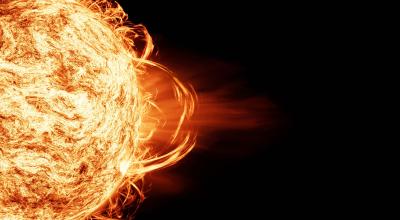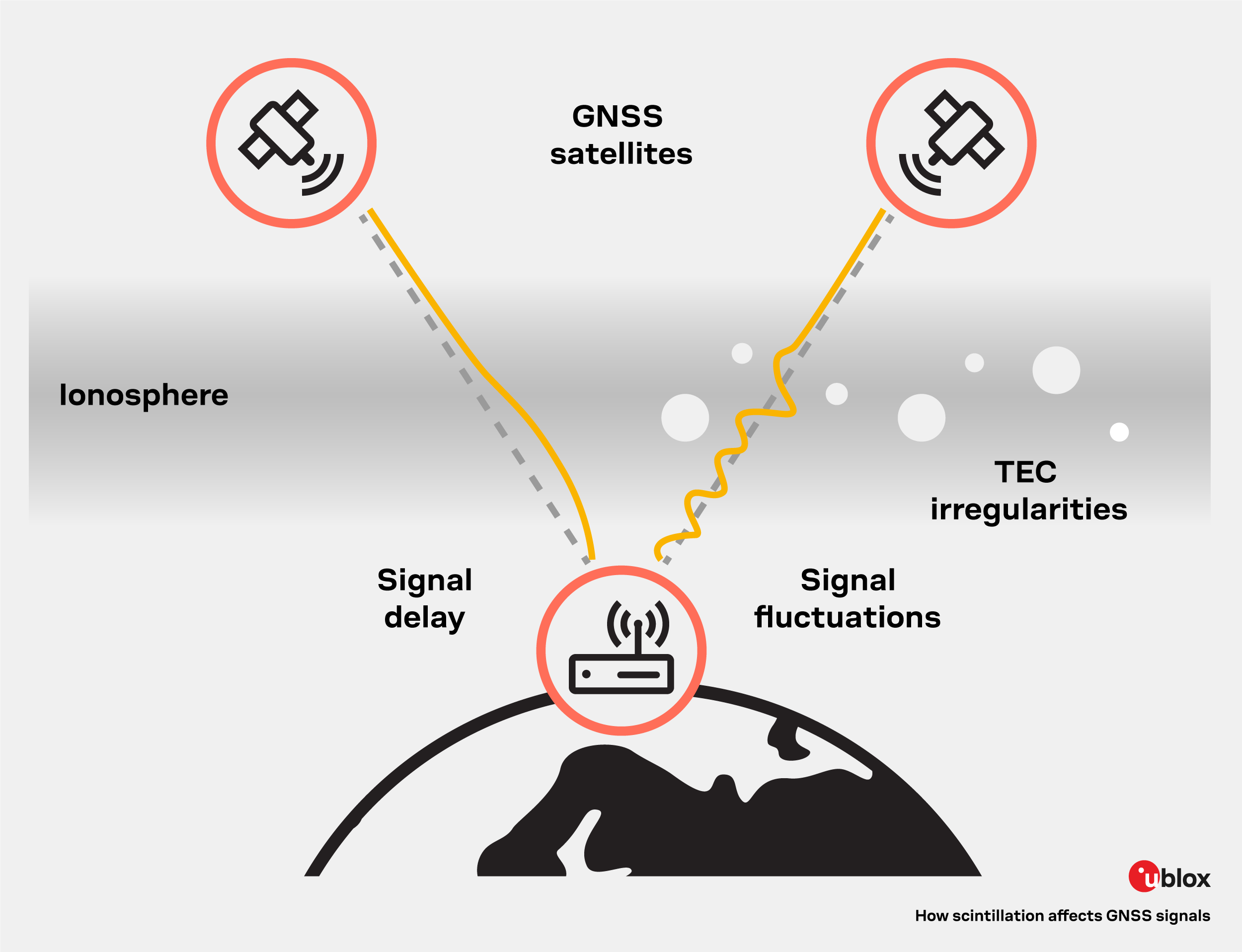
- Support portal
- Evaluation Kits and partner products
u-blox Support
- Product documentation
Documentation
- Investor relations
Investor relations
Insights
|
17 Jun 2024
A periodic event with potentially severe consequences

The sun is the primary source of energy on Earth. Once it reaches the surface, it radiates an average of about 1,000 watts per square meter. It warms us, feeds us, illuminates us, and, more recently, powers our homes. But it can also be a menace. It can burn our skin, dry out crops, and interfere with communication systems, especially at certain times.
Solar activity follows a pattern known as the solar cycle, which spans approximately 11 years. During a solar maximum, the sun radiates more energy than usual, increasing the number of active sunspots, which are cooler parts of the sun’s surface caused by changes in its magnetic field.
A solar storm, consisting of solar flares and coronal mass ejections (CMEs), refers to the unusually massive amount of energy the sun releases during a time frame. It consists of electromagnetic radiation, charged particles, and magnetic fields.
These storms have various effects on Earth, from enhancing the dancing display of multicolored lights in the air, such as the aurora borealis—the familiar northern and southern lights near the Earth’s poles—to wreaking havoc on critical infrastructure. Radio and satellite interference, power grid disruptions, radiation hazards, and GNSS and navigation errors can all result from these storms. As you might have inferred, our interest is in the latter.

But let’s rewind a bit to clarify where the interference originates. When GNSS signals travel through the ionosphere, they are delayed due to free electrons and ions caused by the sun's ultraviolet radiation interacting with molecules in the atmosphere. The delay depends on the total electron content (TEC) along the signal path, with the main active region being between 250 and 400 km above the Earth's surface. Such delays can vary over time (hour, day, and month) and are most intense near the equator.
A second ionospheric effect is called scintillation. This phenomenon occurs due to irregular changes in the ionosphere that cause rapid fluctuations in the GNSS signals' amplitude and phase as well as signal fading. Scintillation increases significantly during solar storms, making GNSS signals difficult to track.

Charged particles in the ionosphere and scintillation affect satellite communications, ultimately interfering with the accuracy and reliability of GNSS receivers.
As the summer of 1859 drew to a close, 200,000 kilometers of telegraph lines were affected by what is known to be the most severe solar storm ever to hit the Earth. The Carrington event demonstrated the palpable damage solar storms can have on communications and the economy.
In 1989, many power grids were knocked out in the northeastern United States and eastern Canada. In about 92 seconds, the province of Quebec went from normal operating conditions to a complete power grid blackout. The storm also caused shortwave interference of radio signals from Europe into Russia. Similar to when an earthquake or a hurricane strikes and the population is not fully prepared, the consequences were more significant than expected.
Two solar storms ago, in July 2000, a powerful geomagnetic storm hit the Earth. According to the National Oceanic and Atmospheric Administration (NOAA), the Bastille Day solar storm reached a peak intensity of G5, the highest level on the NOAA Space Weather Scale. Some of the most notable incidents were radio blackouts. The shower of protons caused short circuits that eventually led to radio blackouts. The storm also caused noise in several satellite imaging systems and interfered with data from a weather satellite.
On February 21, 2024, two solar flares erupted from the sun, reaching R3 levels on the NOAA Space Weather Scale. Aside from the extensive media coverage and in-depth discussions about the event, the storm's intensity was enough to disrupt satellite communication systems and interfere with the accuracy of GPS satellite-guided tractors during the height of planting season.
When people experience a natural phenomenon for which they are unprepared, it is wise to learn from it to prevent similar situations from recurring in the future.
As with any other disruption, such as a cyberattack, navigation systems can be designed to ensure operability even during solar storms. Radio systems can develop strategies to mitigate the effects of solar storms based on an understanding of ionospheric dynamics. Signal processing algorithms and ionospheric models are the two main techniques with the potential to minimize the effects of scintillation.
In the case of GNSS modules and chips, one remedy against solar storms is to implement algorithms in the system that can counteract their repercussions. This means algorithms that can help mitigate the effects of ionospheric disturbances.
The algorithms result from repeatedly testing GNSS modules and chips under similar conditions to gather valuable data. This helps in the continuous development and optimization of GNSS receivers to ensure their proper operation even under challenging conditions.
According to NOAA, the current solar storm ended last Friday (June 14). Yet, the peak of this cycle should occur between November 2024 and March 2026. Apart from the inaccuracies affecting GPS systems in tractors, no other major disturbances have been reported.
We now know that the frequency and severity of solar storms increase every eleven years and have the potential to disrupt communications significantly. A particularly intense geomagnetic storm can severely interfere with GNSS signals and navigation accuracy.
The effects of a solar storm of similar intensity to the Carrington event today would deeply affect sectors such as aviation, maritime, and land navigation. Next time the sun shows us all its might, we need to be prepared because we know there are instances where the intensity is sufficient to cause significant damage.
u-blox’s GNSS modules and chips are designed with algorithms to reduce the effects of solar storms. Rest assured that u-blox is committed to developing the necessary tools to be ready for the next time the sun behaves erratically. Contact us if you would like to know more about the topic.